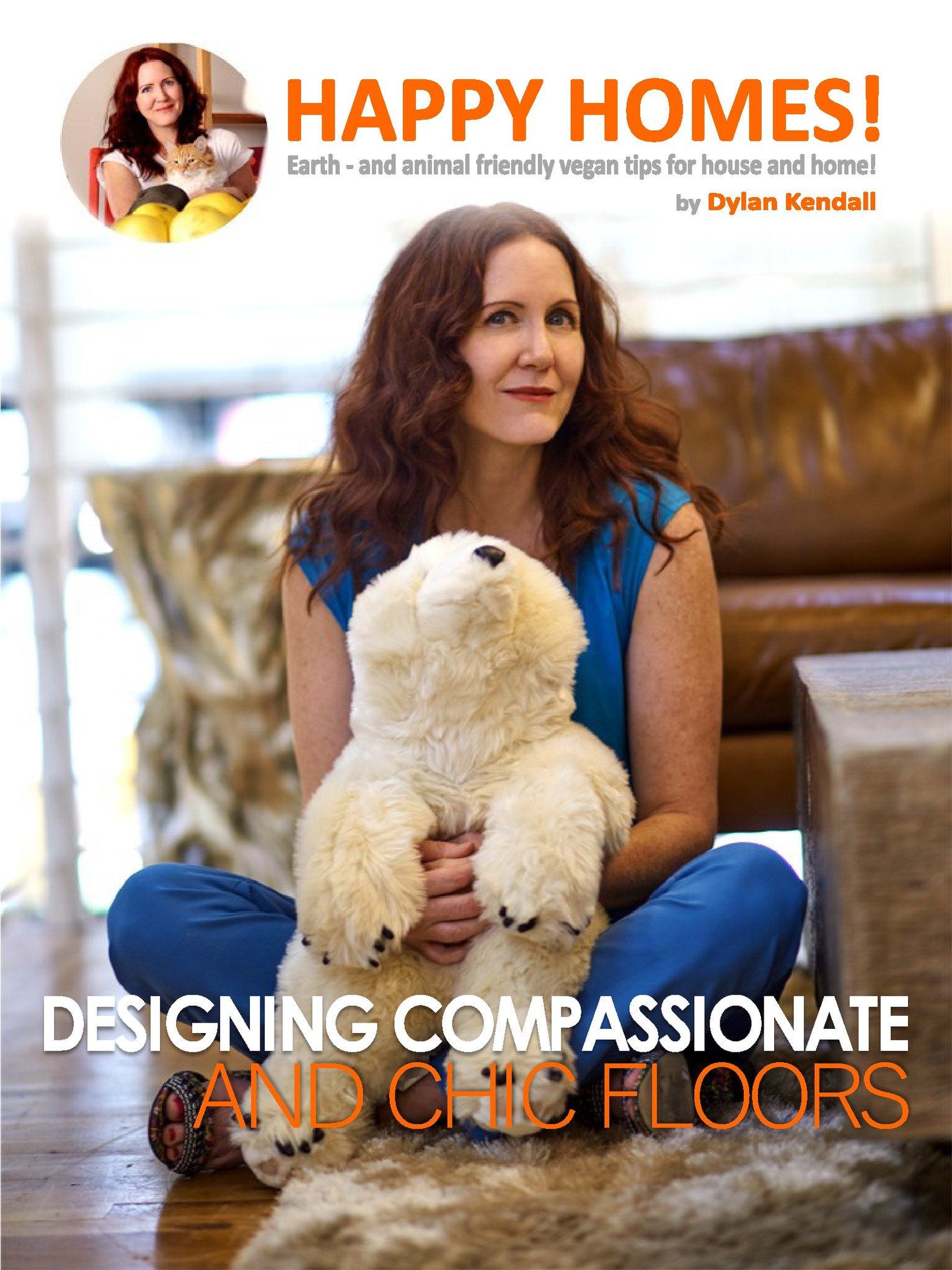
We Got You Covered: Designing Compassionate and Chic Floors
Flooring is the aesthetic foundation of our homes. From hardwood, to carpet, concrete or rug-filled, our floors define the look and style of our homes and even say a little about us. Floors reveal whether we prefer modern and clean, warm and colorful and, now, if we are compassionate. Can we keep our vegan values in mind when we think of our home’s floors? Absolutely.

Flooring Materials
Any number of materials can be used for flooring and many of them are vegan: Ceramic tile, concrete, cork, linoleum, hardwood, bamboo. All animal-free. (In the 1950’s polyvinyl acetate, or PVA white glues, became prominent in the market replacing glues derived from animal parts for wood bonding.) Even more exciting, a new generation of flooring is made from recycled materials or organically grown natural fibers and grasses. Carpet, however, is a more complicated choice.

Carpet
The idea to put a woven floor covering on the ground probably dates back to earliest man in a pre-Neolithic era. But our most recent understanding of carpets developed in Central Asia and the Middle East several thousand years ago. Nomads needed more protection from the cold winters than sheep hide could handle. At the same time, a sense of design was developing and carpets were being made to bring that design, as well as color, into homes. The materials used for the warp, weft and pile came from the herds of goats and flocks of sheep that the nomads kept.* (Carpet Encyclopedia).
These carpets resemble what we in the United States refer to as rugs. However worldwide the word carpet is used interchangeably with the word rug. Both represent any textile floor covering attached to a backing. In the United States wall-to-wall carpet is what we commonly think of when we talk about carpet, while rugs are area-sized and laid on the floor.
Early wall-to-wall carpets in the United States were woven from wool until the early 1800s when a young woman, seeking to recreate a quilt she had seen, sewed thick cotton yarn into unbleached muslin, then clipped the ends of the yarn so they would fluff out, and washed the spread in hot water to hold the yarns in by shrinking the fabric. This experiment gave birth to the first tufted carpet made from cotton. Cotton continued to dominate American made carpets for over a hundred years, after which carpet-makers across the world began to take advantage of new man-made fibers which could be woven more cheaply and were as durable and flexible as natural fibers. Fortunately for vegans, more than 90% of the commercial carpet produced today is made from synthetic fibers: nylon, polypropylene, and acrylics.
In addition to synthetic fibers, carpets have grown to include a wide variety of non-animal derived natural fibers including hemp, linen, and jute. Many environmentally friendly flooring companies have encouraged customers to return to wool as an organic, earth-friendly material but these companies overlook two basic truths: (1) Sheep do not like to be shorn. Industrial sheep shearing is barbaric and cruel. And (2) sheep farms, which can house many thousands of sheep packed tightly together, are a leading contributor to deforestation and long-term damage to the planet’s climate.
Most interesting are new materials made from recycled plastics.

One of my favorite flooring companies is FLOR – FLOR covers your floor with carpet squares that can be arranged to perform like a rug aesthetically or to cover a room from wall to wall. The fibers use to make FLOR tiles and the vinyl used to back the tiles exceeds the Carpet and Rug Institute’s Green Label Plus Standards for low Volatile Organic Compound emissions. The carpet industry continues to evolve and now produces new carpets from recycled worn-out carpets. Additionally, old carpeting is now recycled into a wide variety of products from railroad ties to roof shingles.

Rugs
Rugs are a fantastic choice to add warmth to a home with wood, tile or concrete floors. Rugs can vary in size, shape, color and definitely material. For centuries, rugs were hand woven from wool and many, particularly rugs from the Middle and Far East, still are.
However, new synthetic materials offer a wide variety of fantastic alternatives to wool rugs, providing all the same texture and durability at oftentimes, half the cost.
Using the hides of animals as rugs is an aesthetic preference for many and luckily there are a number of ways to recreate the look with zero harm to animals.
Faux sheepskin and faux cowhide rugs are cheaper than animal hides and they have an aesthetic advantage of being easy to dye. If your room cries for the shape of a sheep skin, IKEA can respond for less than $20 with a fuzzy, warm and soft faux alternative. One of my personal favorites is a FLOR’s faux cow skin made from, what else? Floor tiles!


